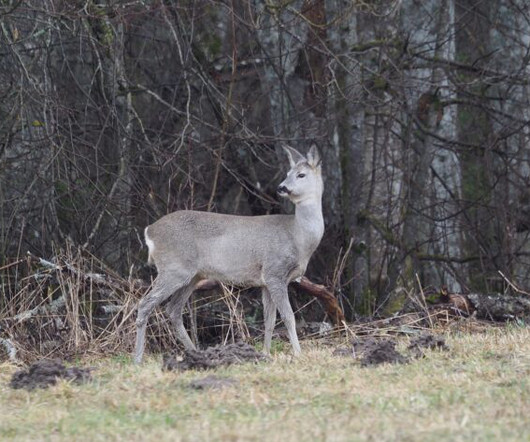Fur and Fangs rather than Feathers and Beaks
10,000 Birds
JANUARY 19, 2024
Note the short legs, stout body and white rump and tail I see Muntjac on virtually every birding (or dog-walking) outing, as these small Asian deer are now very numerous around my home in the Suffolk Brecks. I’ve yet to see one in the UK, but I had a memorable encounter with one while birding from a small boat on a river in Lithuania.












Let's personalize your content